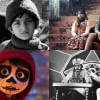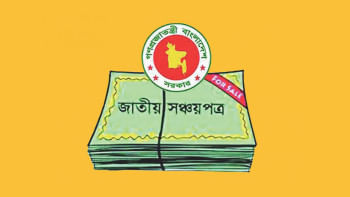Bringing back the tradition of exchanging Eid cards

Whenever we think about the festivities of Eid, receiving salami from elders, wearing new dresses, and indulging in sweetmeats, are some of the things that immediately come to mind. Wishing others, however, is not exactly considered significant enough to warrant a spot in the day's itinerary, and for good reason. You can easily greet your loved ones in no time at all by texting them an overabundance of emoticons or by posting statuses on social media.
Things weren't always this devoid of life though. Going back in time about, let's say a decade ago, Eid mornings had a very special tradition that engulfed children and young people in excitement and had them waiting eagerly in anticipation. Such were the days of vibrant, colourful Eid cards.
Eid cards were intricately designed folded paper cards adorned with printed cartoons, princesses, superheroes, and glittery Eid greetings. Some featured little poems and catchy jingles, while others contained heartfelt messages. The more "premium" cards were ingeniously crafted into the shapes of mosques, crescent moons, and animals, making them stand out from the rest.
You could find these prized cards throughout the month of Ramadan, courtesy of local teenagers and schoolgoers who set up pop-up shops throughout town. By hanging up a collection of quirky and eye-catching cards, these young entrepreneurs attracted hundreds of customers who couldn't wait to stock up on gifts to present their loved ones with.
These cards held a ton of significance for myriad reasons. For young children – who were the primary audience – being able to send and receive cards from friends, classmates, neighbours, and family members alike was one of the biggest highlights of their day. Storing these cards with great care and even bringing them to school to show them off was a long-standing tradition. Even today, some people treasure the Eid cards they received ages ago as some of the last relics of a golden time.
Sadly, those days seem to have faded into oblivion. Physical greetings have been replaced by digital alternatives such as e-cards, text messages, and emails. At the same time, children are more restricted to their homes and glued to their screens than ever, taking away the spirit of setting stalls and spending time outside with friends. The practice of arts and crafts has also dwindled significantly since parents are more concerned with grades and rote learning. As such, hardly anyone wants to make an effort to create Eid cards on their own.
However, this situation can and should change. Young people should be encouraged to explore creative avenues and spend time with friends and loved ones beyond the digital space.
For starters, schools can play a large role in bringing back a culture of exchanging Eid cards. Back in the day, various schools used to assign students the task of designing their own cards in order to exchange them during Eid.
Similarly, before the Ramadan vacation starts, schools can consider holding craft days where teachers and students collectively make Eid cards. By drawing different pictures on them and making their own, personalised designs, young students can join in on the festivities and foster a deeper appreciation for people who make the effort to present them with similar cards. This way, if more and more kids join in on the holiday tradition, wholesalers who used to specialise in cartoon-esque Eid cards can finally bring back their supply. And this doesn't have to be limited to young people – even older generations can join in on the fun and gimmicks to embrace the joy of Eid.
Social media can be a great tool in driving this change forward. Since platforms like Facebook, Instagram, and TikTok help people to be as vocal as ever, a sizable number of social media users advocating for the return of Eid cards can stir a significant shift. Shops and businesses can consider selling Eid cards alongside their regular products. They can also easily advertise their vast catalogue online instead of having to invest in a physical location. The possibilities are endless, but someone needs to take the first step.
While the current medium of exchanging greetings is undoubtedly convenient and time-effective, it can never mimic the sense of attachment and kinship that physical cards once held. Those who never experienced it first-hand may rightfully scoff at such sentiments, but if we can succeed in bringing this age-old tradition back, this perception can certainly move in a more positive direction.
Ayaan and Wafa are probably stuck on a tree somewhere. Send birds and squirrels to keep them company at [email protected] and [email protected]

 For all latest news, follow The Daily Star's Google News channel.
For all latest news, follow The Daily Star's Google News channel. 








Comments